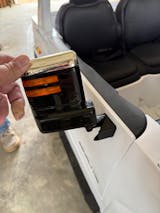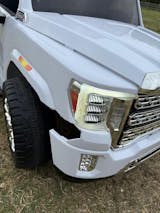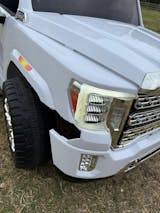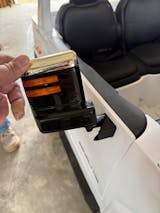We had a few glitches in putting together because product arrived damaged but Rupesh from Technical Support worked with us via phone video to overcome the vehicle shortcomings and the car works beautifully. We are very happy with purchase and extremely impressed with expert and very kind and patient tech support.
The part was not the exact size as the broken part trying to get someone to cut it off
We bought this car and it had broke twice in the first 3 days of using it. Do not recommend!!
Please note that my review shows only four stars but I am giving this a five-star review due to the excellent technical support we received.
We just took delivery of our second GMC truck, the first one lasted 3 years without any body damage whatsoever. The new one we just received broke twice in the first 3 days. Not happy at all!! Do not recommend!












